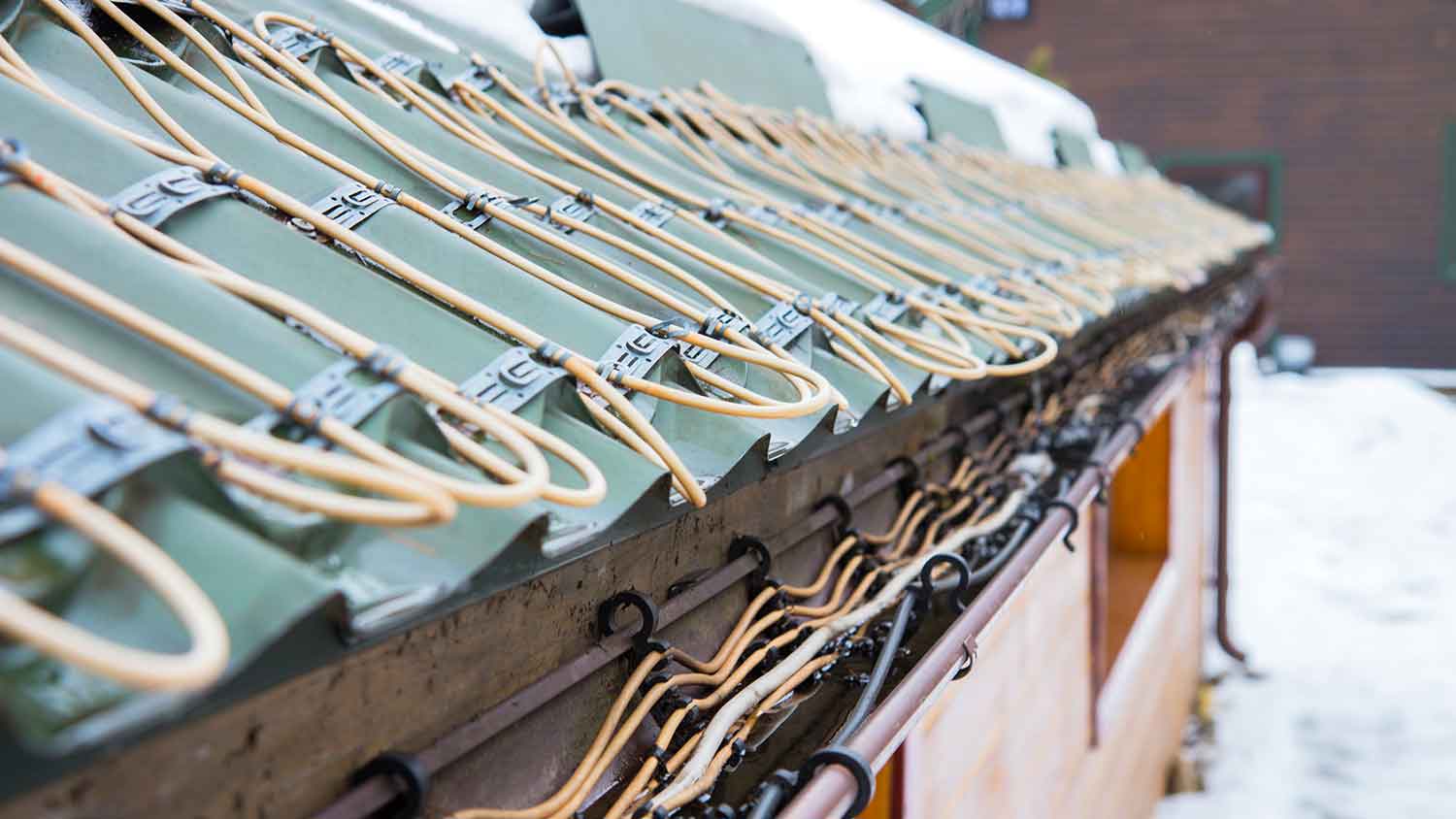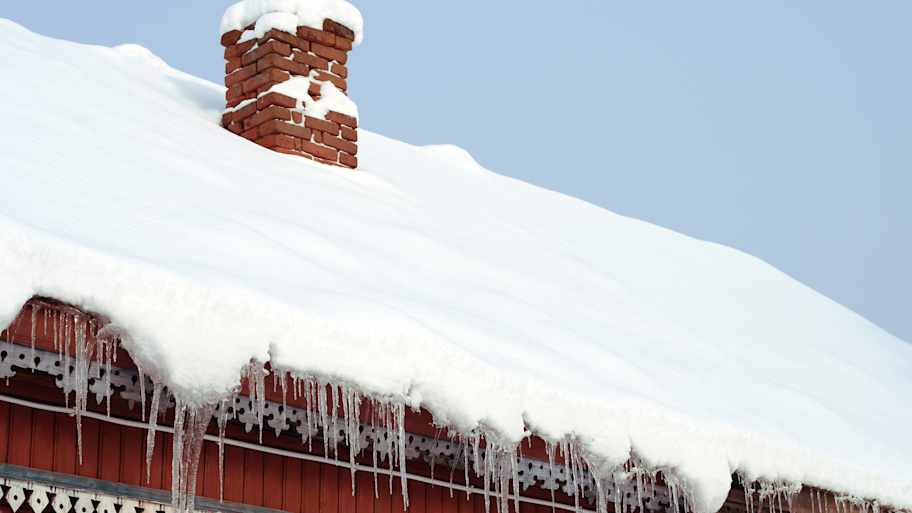
Discover the average roof heating cable installation cost, key price factors, and how to budget for your project. Learn how to save and what to expect.
The average roof snow removal cost is $350, with most homeowners paying between $200 and $600. Main factors include roof size, snow depth, and labor rates.


Roof snow removal is the process of clearing accumulated snow and ice from your home’s roof to prevent structural damage and leaks.
The total cost depends on your roof’s size, snow depth, slope, and the method used, with prices often charged per square foot or hour.
Investing in professional removal at $50 to $100 per hour can help avoid expensive repairs by preventing roof collapse, leaks, and ice dams.
Removing snow regularly can extend your roof’s lifespan and maintain your home’s safety during heavy winter weather.
Emergency or after-hours service, as well as add-ons like ice dam removal, may increase your overall bill by up to 50%.
This article was created using automation technology and thoroughly fact-checked and edited by an Angi Editor in accordance with our AI policy.
Roof snow removal cost averages $350, with most services ranging from $200 to $600 per visit. Homeowners may pay as little as $150 for light snow on a small roof or up to $1,000 for deep snow or complex jobs. Pricing is often calculated per square foot or per hour, depending on the service.
Quickly addressing snow buildup helps prevent roof damage and water leaks. In this guide, we’ll break down roof snow removal cost factors, ongoing expenses, DIY versus professional options, and tips to help you get the best value for your home.
When budgeting for roof snow removal, it’s important to understand what drives the final price. Let’s look at the main factors that can affect your costs.
The method used for roof snow removal plays a big role in cost:
Manual shoveling and roof raking are common for light to moderate snow.
Steam removal and de-icing are needed for heavy snow or ice dams.
Specialized services like ice dam removal require extra equipment and expertise, which can increase the overall price.
| Removal Method | Average Cost per Visit |
|---|---|
| Manual shoveling | $200–$400 |
| Roof raking | $100–$250 |
| Steam removal | $400–$700 |
| De-icing (cables) | $300–$600 |
| Ice dam removal | $400–$1,000 |
Choosing the right method helps protect your roof and control costs. For example, steam removal is more expensive but necessary for thick ice or sensitive roofing materials.
Roof size has a direct impact on roof snow removal cost. Most pros charge by the square foot, with larger roofs requiring more time and effort. Expect to pay between $0.20 and $0.50 per square foot. Steep or complex roof shapes may increase the rate. Small roofs (under 1,000 square feet) cost less, while large or multi-story homes come with higher fees.
| Roof Size (Sq. Ft.) | Average Cost per Visit |
|---|---|
| 500 | $150–$250 |
| 1,000 | $200–$400 |
| 2,000 | $400–$700 |
The type of roofing material affects both the approach and the cost of snow removal. Asphalt shingles are common and relatively easy to clear, while metal, tile, or flat roofs may require special care or equipment.
Delicate materials are more prone to damage, so pros may take extra precautions, which can increase labor time and cost. The more delicate or complex your roof material, the more you may pay for careful, damage-free removal.
Roof snow removal is performed by general contractors, roofing specialists, or snow removal companies. Labor is often charged per hour ($50 to $100), per visit, or per square foot. Some companies set a minimum service fee, which includes travel, setup, and safety equipment. Labor rates can be higher in urban or high-demand regions.
Emergency or after-hours service often increases labor charges by 25% to 50%. Always ask what is included in the quoted price—some companies bundle setup and safety measures, while others bill separately.
Preparation costs can add to your total bill. Clearing walkways, moving vehicles, and setting up ladders or safety harnesses takes time and sometimes requires extra labor.
Homes with difficult access—such as steep roofs, multiple stories, or obstacles like landscaping—may see additional fees. Setup and safety measures can add $50 to $200 to your final cost, especially for complex jobs.
Tipping is not required but is appreciated in the snow removal industry, especially for challenging or hazardous jobs. A standard tip is 10% to 20% of the total bill or $20 to $50 per worker for larger projects.
Tipping is most common for one-time or emergency visits, while regular contract customers may tip at the end of the season.
Several additional factors can increase your roof snow removal cost:
Emergency or same-day service surcharges.
Ice dam removal is an add-on or separate charge.
Gutter clearing and post-removal roof inspection fees.
Extra charges for removing deep or wet, heavy snow.
Fees for hazardous conditions (icy surfaces, extreme cold).
Permit or insurance requirements in certain municipalities.
Cleanup or hauling away snow and ice after removal.
These extras can add $50 to $500 or more to your final bill, depending on the scope and urgency.
Snow removal is not always a one-time job. Ongoing costs can add up, especially in snowy climates.
Regular snow removal acts as preventative maintenance, helping you avoid roof leaks and costly repairs. Some homeowners opt for contract-based services, which provide scheduled visits after each storm or when snow reaches a predetermined depth.
Contract rates may be $500 to $1,500 per season, depending on your location and roof size. Additional tasks, such as gutter cleaning and roof inspections, cost between $100 and $300 each.
If you prefer to do some snow removal yourself, plan for equipment and operating costs. Purchasing a roof rake costs $40 to $100, while de-icing cables run $100 to $400 for materials plus installation.
Heated cables can slightly increase your electricity bill, averaging $5 to $20 per month during winter. Storing and maintaining your tools also adds to your yearly expenses.
Snow accumulation or improper removal can damage your roof, leading to costly repairs. Common fixes include:
Shingle replacement costs: $150 to $500
Leak repair costs: $200 to $800
Structural reinforcements after a collapse: $1,000 to $5,000
Emergency repairs for severe water intrusion or roof cave-ins can cost thousands. Preventative snow removal is a smart investment to help avoid these larger expenses.
Homeowners insurance often covers snow-related roof damage, but claims can raise your premiums. Additional coverage or riders for snow and ice damage may cost $50 to $200 per year. Out-of-pocket costs for uninsured repairs can be significant, so check your policy and ask your agent about winter weather protections.
Many homeowners consider removing snow themselves to save money. Let’s compare costs and risks.
DIY expenses include a roof rake ($40 to $100), safety gear like harnesses ($75 to $250), and de-icing products ($20 to $50 per application). While you save on labor, DIY methods come with increased risk of falls, injury, or roof damage—especially on steep or multi-story homes.
Hiring a local snow removal company may come with a higher upfront cost, but it reduces your risk and liability. Pros bring the right tools, experience, and insurance coverage. DIY is safest for light snow on single-story homes with easy access. For larger jobs, complex roofs, or heavy accumulations, it’s best to call a pro.
Consider the time commitment and physical demands. Snow removal can take several hours, depending on roof size and snow depth. Improper removal may void your roof warranty, so weigh your options carefully.
Some situations may require additional services, which can increase your total roof snow removal cost. Here are common add-ons:
Ice dam removal costs: $400 to $1,000 per visit, especially for thick or stubborn ice
Gutter cleaning costs: $100 to $250, often bundled with snow removal
Roof inspection post-removal: $100 to $300, to check for damage or leaks
Emergency or after-hours snow removal: Adds 25% to 50% to standard rates
Heated cable installation costs: $500 to $1,500 (materials and labor), to prevent future buildup
Snow guard or barrier installation costs: $300 to $800, to keep snow from sliding off dangerously
Debris or ice hauling: $100 to $300, for removal and disposal
These extras can help maintain your roof’s health and safety, particularly after major storms.
Looking to save on roof snow removal costs? Try these practical strategies:
Schedule regular snow removal before the snow becomes too deep or heavy.
Bundle services like snow removal and gutter cleaning to receive possible discounts.
Get multiple quotes from local professionals to find the best rate.
Prepare the area by clearing walkways and moving vehicles to speed up the process.
Invest in preventive measures like heated cables or snow guards.
Consider a seasonal contract for a lower per-visit rate.
Remove light snow yourself if it’s safe, but always leave heavy or risky jobs to professionals.
Home is the most important place on earth, which is why Angi has helped more than 150 million homeowners transform their houses into homes they adore. To help homeowners with their next project, Angi provides readers with the most accurate cost data and upholds strict editorial standards. We extensively research project costs to develop the pricing data you see, so you can make the best decisions for you and your home. We rely on reputable sources, including the U.S. Bureau of Labor Statistics, academic journals, market studies, and interviews with industry experts—all to ensure our prices reflect real-world projects.
Want to help us improve our cost data? Send us a recent project quote to [email protected]. Quotes and personal information will not be shared publicly.
From average costs to expert advice, get all the answers you need to get your job done.

Discover the average roof heating cable installation cost, key price factors, and how to budget for your project. Learn how to save and what to expect.

Ice dams can cause serious roof damage. Learn why a metal roof can help you avoid ice dams and the problems they cause.

Wondering why icicles form on your roof? Learn the underlying problems, why you need to take action, and the solutions you can implement to fix the issue.

It’s snowing up a storm outside when you start to wonder: How much snow can my roof hold? Use our snow load calculator to determine your roof’s limits.

Wondering how to prevent icicles on roofs? While you can't keep it from snowing, you can take steps to keep the icicles at bay. Find out how.

Ice dams can seriously damage your roof and home. Learn what causes them and how to prevent ice dams from forming this winter.